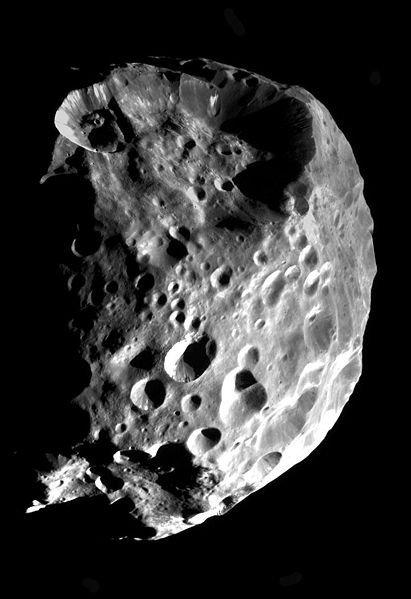Sinope is a retrograde irregular satellite of Jupiter discovered by Seth Barnes Nicholson at Lick Observatory in 1914, and is named after Sinope of Greek mythology.
Sinope photographed by the Haute-Provence Observatory on 14 August 1998
In astronomy, an irregular moon, irregular satellite, or irregular natural satellite is a natural satellite following a distant, inclined, and often highly elliptical and retrograde orbit. They have been captured by their parent planet, unlike regular satellites, which formed in orbit around them. Irregular moons have a stable orbit, unlike temporary satellites which often have similarly irregular orbits but will eventually depart. The term does not refer to shape; Triton, for example, is a round moon but is considered irregular due to its orbit and origins.
Irregular satellites of Jupiter (red), Saturn (green), Uranus (magenta) and Neptune (blue) (including Triton). The horizontal axis shows their distance from the planet (semi-major axis) expressed as a fraction of the planet's Hill sphere's radius. The vertical axis shows their orbital inclination. Points or circles represent their relative sizes. Data as of February 2024.
Phoebe, Saturn's largest irregular satellite



